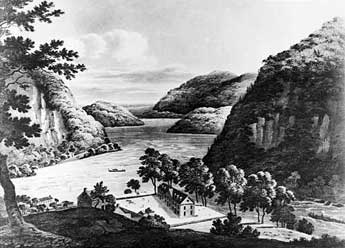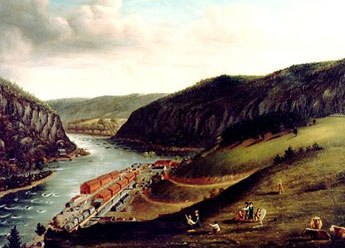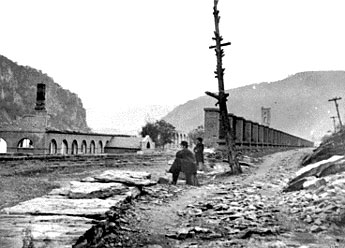|
---
Click on the images and on the active items for more informations
---
|
|
|
|
The
citizen of
Harper's
Ferry finds itself to the
confluence between the rivers Shenandoah and Potomac. Thanks to
the
abundant hydraulic energy available it become an important industry
center among which the military arsenal that rose in 1799 and which
produced, until to the explosion of the civil war in 1861 more than
600.000 weapons, among long and short.
|
This Arsenal was also the
base of the studies of James H.
Burton about the
cave
base balls today commonly known like Miniť. |
|
|
|
|

|

|
|
The
Arsenal in 1803
|
The
Arsenal in 1824
|
|
(The Large Arsenal dominates
this 1803 print of Harpers Ferry. The Potomac ferry is pictured crossing
the river. A gundalow descends the Shenandoah River (right). In 1783,
Thomas Jefferson declared that "This scene is worth a voyage across
the Atlantic." Year: 1803. Image Credit: Historic Photo Collection,
Harpers Ferry NHP.)
|
|
|
|
|
The Arsenal was destroyed
on April 18th 1861 during the foughts between Confederates and Unionists
and it was no more reconstructed.
Only the building of the guard remained intact and it is today known
like "John
Brown Fort".
|

|